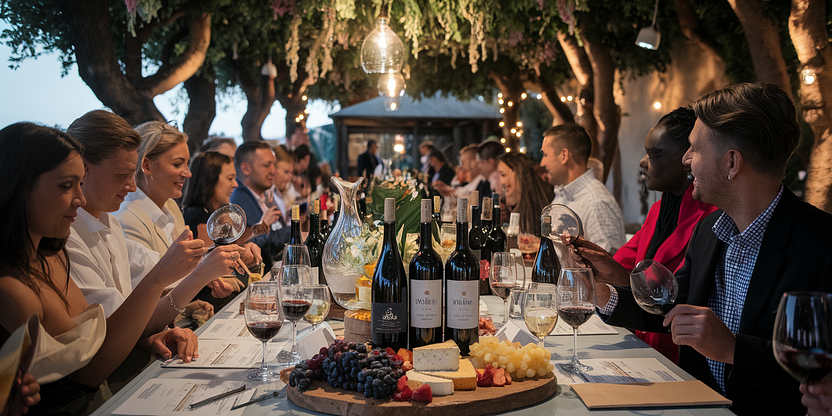
Wine Tasting Checklist: Glassware, Pairings & Setup (2025)
Introduction
Wine tasting is more than just sipping wine; it's an art that requires the right tools and environment to truly appreciate the flavors and aromas. Whether you are a novice or a seasoned taster, having a checklist ensures a fulfilling experience. This guide will cover essential elements of wine tasting such as selecting the right glassware, perfecting food pairings, and setting up your tasting space.
The Complete Checklist
[ ] Glassware
Why This Matters:
The right glass can enhance the aroma and taste by allowing the wine to breathe properly.
What To Look For:
- Shape: Consider bowl shape for aeration
- Material: Crystal glass for clarity
- Size: At least 12 oz
Recommended Products:
Budget Option: Libbey Vina ($25)
Functional set, suitable for beginners, but lacks crystal clarity.
Best Value: Riedel Winewings ($65)
Ergonomically designed, enhances wine's bouquet and flavor.
Premium: Zalto Denk’Art ($140)
Hand-blown, superb quality, ideal for serious enthusiasts.
Common Mistake: Choosing glasses based solely on aesthetics over functionality. Opt for purpose-driven designs.
[ ] Pairings
Why This Matters:
The right pairings complement the wine and enhance its profile.
What To Look For:
- Balance: Match wine acidity with food flavors
- Diversity: Variety to explore different pairings
- Fresh Ingredients: Ensure quality
Recommended Products:
Budget Option: Cheese Board Kit ($20)
Includes a variety of cheeses that pair with most wines.
Best Value: Wine Enthusiast Wine & Cheese Pairing Set ($50)
Curated selection of items that complement each other well.
Premium: Gourmet Pantry Pairing Collection ($120)
Includes specialty cheeses, meats, and accoutrements for a full experience.
Common Mistake: Overlooking the importance of pairings. Ensure your selections enhance, not overshadow, the wine.
[ ] Setup
Why This Matters:
A well-thought-out setup contributes significantly to the tasting mood and experience.
What To Look For:
- Ambiance: Good lighting
- Space: Comfortable and uncluttered
- Accessories: Corkscrews, decanters
Recommended Products:
Budget Option: IKEA KORKEN ($15)
Affordable setup tools, functional but basic.
Best Value: Williams Sonoma Wine Tasting Kit ($70)
Comprehensive kit with quality accessories.
Premium: Vinotemp Wine Tasting Room Setup ($300)
Complete set including premium decanters and aerators.
Common Mistake: Neglecting the atmosphere. Ensure the setting complements the experience.
Budget Summary
Category Budget Best Value Premium Glassware $25 $65 $140 Pairings $20 $50 $120 Setup $15 $70 $300FAQ
How do I choose the right glassware?
Focus on the shape and material of the glass, which affect how the wine's aromas and flavors are perceived.
What are the basics of pairing food with wine?
Pair wines with food of similar weight and flavors, considering acidity and sweetness to enhance the experience.
Why is the setup important?
A well-planned setup creates the right atmosphere and can greatly influence the tasting process.
How often should I clean my wine glasses?
Clean glasses after each use to prevent residue buildup, maintaining clarity and hygiene.
What is an easy pairing for beginners?
Start with classic pairings like white wine with fish or red wine with red meat for a simple yet effective match.
Final Checklist (Quick Reference)
- [ ] Glassware: Choose shape, material, size
- [ ] Pairings: Balance flavors
- [ ] Setup: Consider ambiance
This structured approach will enhance every aspect of your wine tasting experience in 2025, ensuring a well-rounded and enjoyable event.
 Checklist Method
Checklist Method



